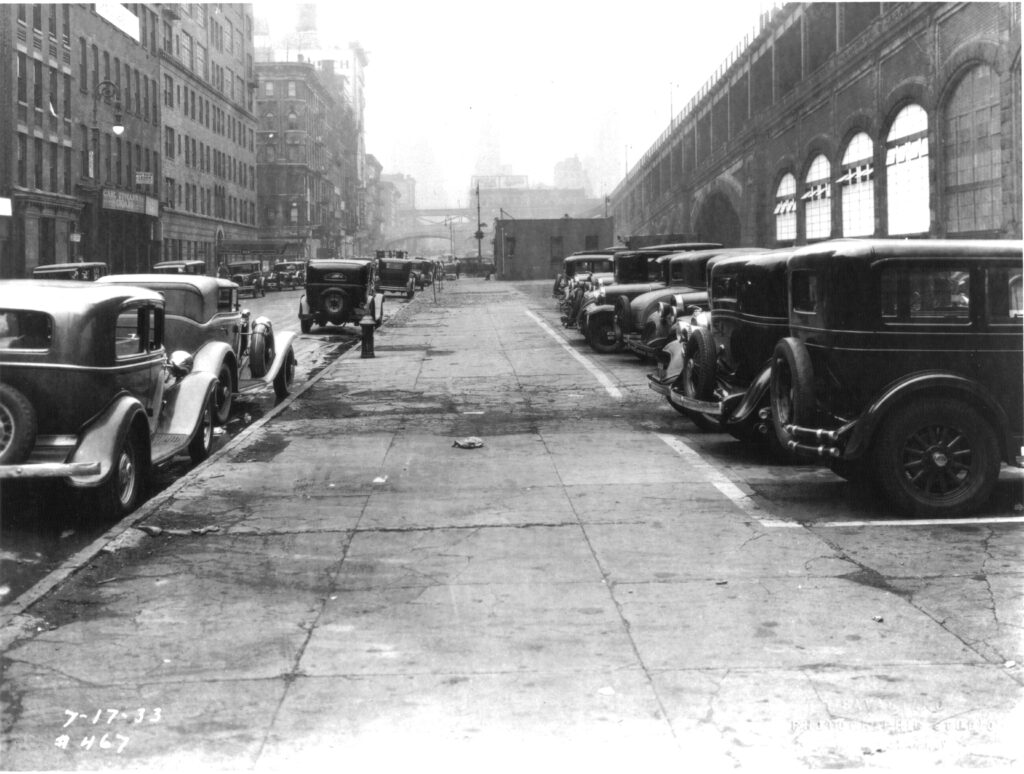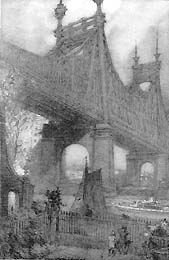
Originally called the Blackwell’s Island Bridge, the Queensboro Bridge opened to traffic on March 30, 1909. Designed by architect Henry Hornbostel and engineer Gustav Lindenthal, the main section underneath the bridge consisted of a buff-colored canopy of tile vaults designed by Rafael Guastavino, an architect from Barcelona. Rafael Guastavino and his son worked together and adapted a centuries- old vernacular technology called the boveda Catalan or Catalan vault.
This beautiful arcade underneath the Bridge served as a year-round marketplace where vendors sold fruits and vegetables and it quickly became known as Bridgemarket. With the onset of the Great Depression, the market closed during the 1930s and was later used by the New York City Department of Transportation.

On November 23, 1973, the New York City Landmarks Preservation Commission designated the Queensboro Bridge a landmark, including the large areas below the bridge, which were described as notable. Over 100 of Guastavino’s treasured works are located in New York City and have been registered as New York City landmarks.
Over the next 20 years, several different entrepreneurs attempted to develop the space. With neighborhood opposition from local community groups who were opposed to an increase of traffic, any ideas for refurbishment were shelved. It was not until July of 1995 that all parties agreed on a design concept and The Landmarks Preservation Commission unanimously approved all revisions for the future development of Bridgemarket. Bridgemarket would occupy a total of 98,000 square feet to include a market, restaurant and retail space.
In 1997, London based Conran Holdings signed a lease for 42,000 square feet for a furniture and housewares store, The Terence Conran Shop, and 25,000 square feet for two restaurants, Guastavino’s and Club Guastavino. On December 8, 1999 Bridgemarket introduced its first tenant, The Terence Conran Shop.


On February 14, 2000, Guastavino’s opened as a restaurant, named after Rafael Guastavino. After an extremely successful run as an a la carte restaurant it was determined, based on the sheer size of the space and the countless requests to hold private functions, that the best use for Guastavino’s would be to concentrate on private events only. In November of 2005, Guastavino’s reopened as just that, a premier event space in the heart of New York City.